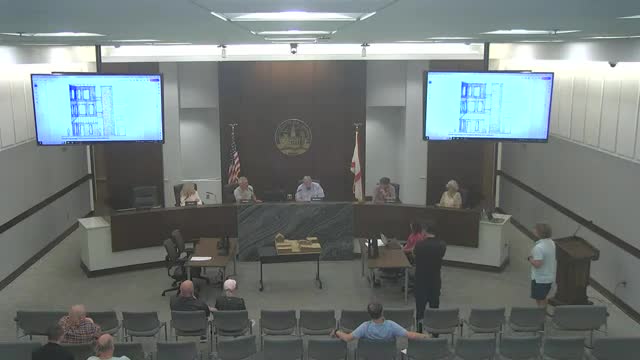Debate heats up over historic district design guidelines
June 14, 2024 | Opelika, Lee County, Alabama

This article was created by AI summarizing key points discussed. AI makes mistakes, so for full details and context, please refer to the video of the full meeting. Please report any errors so we can fix them. Report an error »

In a recent government meeting, officials engaged in a detailed discussion regarding the design and materials proposed for a new construction project in the downtown historic district. The conversation highlighted the tension between maintaining the district's historical integrity and allowing for modern architectural expressions.
Key points of contention included the use of wood as a primary material, which some officials argued aligns with existing structures in the area, while others expressed concerns about its appropriateness in a historic context. One official emphasized the need for clear guidelines that would help developers understand what is acceptable, stating, \"We need something you guys can leave with and know if you do x, y, and z, you can get your project approved.\"
The design's visual impact was also a significant topic. Some officials suggested that increasing the amount of glass in the facade could mitigate concerns about the dominance of wood, potentially creating a more inviting storefront. However, there were worries about how the new design would blend with existing buildings, with one member questioning, \"Are we ready for funky in the historic district?\" This reflects a broader concern about the potential for future developments to stray too far from traditional aesthetics.
The discussion also touched on the importance of context, with officials weighing the experience of the developer and architect against the established guidelines for the historic district. One member noted, \"If we only build what we have, we'll only get that,\" advocating for a balance between innovation and preservation.
As the meeting concluded, officials acknowledged the complexity of the decision at hand, recognizing the need to protect the character of the downtown area while also accommodating new designs that reflect evolving tastes and needs. The outcome of this discussion will likely influence future projects and the overall architectural landscape of the historic district.
Key points of contention included the use of wood as a primary material, which some officials argued aligns with existing structures in the area, while others expressed concerns about its appropriateness in a historic context. One official emphasized the need for clear guidelines that would help developers understand what is acceptable, stating, \"We need something you guys can leave with and know if you do x, y, and z, you can get your project approved.\"
The design's visual impact was also a significant topic. Some officials suggested that increasing the amount of glass in the facade could mitigate concerns about the dominance of wood, potentially creating a more inviting storefront. However, there were worries about how the new design would blend with existing buildings, with one member questioning, \"Are we ready for funky in the historic district?\" This reflects a broader concern about the potential for future developments to stray too far from traditional aesthetics.
The discussion also touched on the importance of context, with officials weighing the experience of the developer and architect against the established guidelines for the historic district. One member noted, \"If we only build what we have, we'll only get that,\" advocating for a balance between innovation and preservation.
As the meeting concluded, officials acknowledged the complexity of the decision at hand, recognizing the need to protect the character of the downtown area while also accommodating new designs that reflect evolving tastes and needs. The outcome of this discussion will likely influence future projects and the overall architectural landscape of the historic district.
View full meeting
This article is based on a recent meeting—watch the full video and explore the complete transcript for deeper insights into the discussion.
View full meeting
